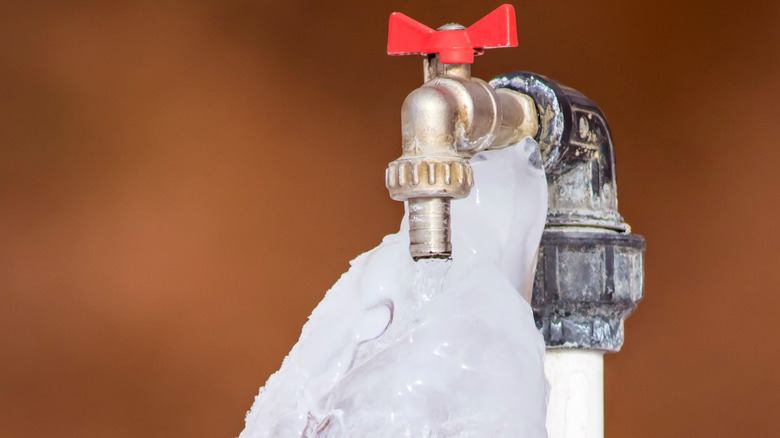Here below you can locate more very good material around How to prepare your home plumbing for winter weather.

Cold weather can damage your pipes, especially by freezing pipelines. Here's just how to prevent it from taking place and what to do if it does.
Introduction
As temperatures decrease, the threat of frozen pipes rises, potentially leading to expensive fixings and water damage. Understanding exactly how to prevent icy pipes is critical for property owners in cold climates.
Avoidance Tips
Shielding prone pipes
Cover pipelines in insulation sleeves or utilize heat tape to shield them from freezing temperatures. Focus on pipelines in unheated or outside areas of the home.
Home heating methods
Maintain interior rooms appropriately heated up, specifically areas with pipes. Open cupboard doors to permit warm air to flow around pipes under sinks.
Exactly how to recognize frozen pipes
Try to find lowered water flow from faucets, uncommon smells or sounds from pipelines, and visible frost on exposed pipes.
Long-Term Solutions
Architectural changes
Consider rerouting pipes away from outside wall surfaces or unheated locations. Include extra insulation to attic rooms, basements, and crawl spaces.
Upgrading insulation
Buy high-quality insulation for pipelines, attics, and walls. Correct insulation assists maintain regular temperatures and reduces the threat of frozen pipelines.
Safeguarding Outdoor Pipes
Garden pipes and outdoor faucets
Separate and drain yard hoses prior to winter. Set up frost-proof faucets or cover outdoor faucets with shielded caps.
Understanding Frozen Pipelines
What triggers pipelines to freeze?
Pipes freeze when revealed to temperature levels below 32 ° F (0 ° C) for extended periods. As water inside the pipelines ices up, it increases, taxing the pipeline walls and potentially causing them to burst.
Risks and damages
Frozen pipes can lead to water system disturbances, residential or commercial property damage, and expensive repairs. Ruptured pipelines can flooding homes and trigger comprehensive structural damages.
Indicators of Frozen Water Lines
Determining icy pipes early can prevent them from breaking.
What to Do If Your Pipelines Freeze
Immediate actions to take
If you believe icy pipes, maintain faucets open to soothe pressure as the ice melts. Use a hairdryer or towels taken in hot water to thaw pipes slowly.
Verdict
Preventing icy pipes calls for aggressive measures and fast reactions. By comprehending the reasons, indications, and preventive measures, home owners can secure their plumbing throughout winter.
5 Ways to Prevent Frozen Pipes
Drain Outdoor Faucets and Disconnect Hoses
First, close the shut-off valve that controls the flow of water in the pipe to your outdoor faucet. Then, head outside to disconnect and drain your hose and open the outdoor faucet to allow the water to completely drain out of the line. Turn off the faucet when done. Finally, head back to the shut-off valve and drain the remaining water inside the pipe into a bucket or container. Additionally, if you have a home irrigation system, you should consider hiring an expert to clear the system of water each year.
Insulate Pipes
One of the best and most cost-effective methods for preventing frozen water pipes is to wrap your pipes with insulation. This is especially important for areas in your home that aren’t exposed to heat, such as an attic. We suggest using foam sleeves, which can typically be found at your local hardware store.
Keep Heat Running at 65
Your pipes are located inside your walls, and the temperature there is much colder than the rest of the house. To prevent your pipes from freezing, The Insurance Information Institute suggests that you keep your home heated to at least 65 degrees, even when traveling. You may want to invest in smart devices that can keep an eye on the temperature in your home while you’re away.
Leave Water Dripping
Moving water — even a small trickle — can prevent ice from forming inside your pipes. When freezing temps are imminent, start a drip of water from all faucets that serve exposed pipes. Leaving a few faucets running will also help relieve pressure inside the pipes and help prevent a rupture if the water inside freezes.
Open Cupboard Doors
Warm your kitchen and bathroom pipes by opening cupboards and vanities. You should also leave your interior doors ajar to help warm air circulate evenly throughout your home.
:strip_icc()/snow-outdoor-faucet-pipes-4af65d1e5e904fb1aa7bf74071fe5d89.jpg)
We are very interested in Winter Plumbing Precautions: Preventing Frozen Pipes and I really hope you appreciated the new page. Do you know another person who is excited about Prevent Frozen Pipes ? Be sure promote it. We appreciate reading our article about 6 Ways to Prevent Frozen Pipes.
Source